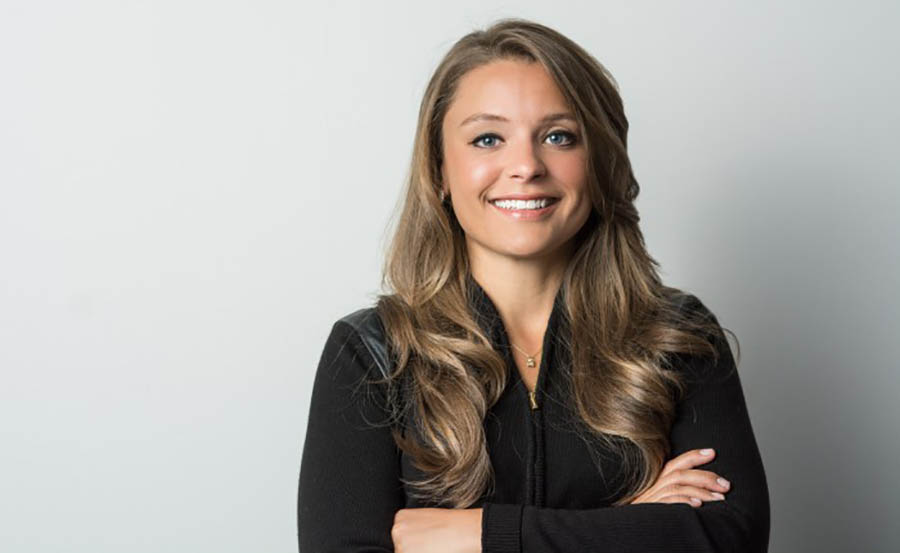
Stepping into Avery’s Journey and Breaking Through Bias
In this column, we welcome our first guest columnist, Bethany Whittles Harris. Ms. Harris is an associate at Mossing & Navarre, LLC, where her practice includes prosecuting medical malpractice, complex personal injury, and nursing home negligence cases.
I recently agreed to participate in GlassCeiling.com’s professional development seminar “Avery’s Journey” as a walk-on, though I had no idea into what, exactly, I was walking. All I knew was that the program would count for continuing legal education credits (CLE’s) and would involve skits based on Andie Kramer and her husband, Al Harris’ new book, Breaking Through Bias, due out May 17, 2016. Andie proposed the idea and because she is a good friend, I agreed. Along with GlassCeiling.com, the event was co-sponsored by an organization Andie co-founded, the Women’s Leadership and Mentoring Alliance.
Andie has been a mentor of mine for several years and from the beginning of our relationship, we talked candidly about gender bias in the workplace, swapping war stories and sharing ideas about what works and what doesn’t for coping as a professional woman. I could tell early on that this was a subject that Andie was extremely passionate about.
Breaking Through Bias started as Andie’s rejection of the recently well-publicized notion that women cannot “have it all.” The book contains specific methods and techniques that women can utilize as they seek to advance their careers in-step with their male counterparts. Andie was kind enough to send me pieces of the book as they came to being and ask for my thoughts and comments. I was also able to read an advanced copy of the finished product. Suffice it to say, I’m familiar with the advice Andie and Al prescribe.
I learned quickly that “Avery’s Journey” consisted of a series of scenes written by a professional playwright and GlassCeiling.com’s founder, Ruth Goran. The skits highlighted scenarios from the book and portrayed Avery, a young female attorney, navigating through a firm interview, client meetings, a run-in with fellow associates at the firm, and her first annual review. Professional actors played the parts (I was the exception, playing an assistant known as “Marge”), and a fellow attorney Margaret Manetti played an assistant known as “Lisa.”
Andie and Al participated and commented as these scenes unfolded on stage, and I thought how strange it must be to see years’ worth of research and writing come to life through the craft of professional thespians. Andie and Al also entertained questions between each skit. Paralleling issues also found in their book, Andie and Al highlighted each of Avery’s missteps in a particular moment or situation – many of which are commonly encountered by professional women. Andie and Al further discussed ways in which Avery could adjust her communication techniques in a given situation that would have better served her and bolstered her boss’, colleagues’ and clients’ perceptions of her. Attendees chimed in with similar experiences of their own and additional suggestions or criticisms for Avery.
“Avery’s Journey” did a great job of highlighting the bottom line of Breaking Through Bias—communication in the professional world is largely dominated by rules, cues and mores constructed by men, for men. This book does not teach women how to communicate like men. But it does teach women how to think about and, when necessary, adjust their communication techniques to become more effective in the status quo.
Reading this book in its different stages has left me ample time to contemplate the prevalence of gender-based bias in the workplace. But for me, seeing these scenes played out by actors provoked much more emotion than I expected. I was repulsed by the way Avery was ignored in a client meeting and infuriated when her colleague stole her idea and pitched it as his own. I wanted to scream at Avery for failing to extend her hand for a handshake as she walked into an initial firm interview. “She,” the every-young-professional-woman, was there in front of an entire audience for them to experience from her point of view. Seeing this material presented in this medium was powerful.
As a lawyer, I am used to doling out counsel. I have been in the position, though, of feeling like I could use some advice myself regarding professional advancement and some of the hurdles I’ve faced early on because I’m a woman. Along the way, having touchstones from advice that’s turned into Andie and Al’s book helped me reflect on my own communication style and contemplate how to more effectively approach particular situations.
The communication techniques we utilize, whether consciously or subconsciously, affect our chances for advancement. Breaking Through Bias has convinced me of that. But there are ways to affect the perceptions others have of us as professional women in order to advance at our desired pace. There are methods for navigating workplace biases against women, working mothers, and women leaders. In my experience, they’re worth learning and implementing. Step One: read Andie and Al’s book. They’ll take it from there.
**Avery’s Journey can be viewed on Andie and Al’s YouTube Channel.**

